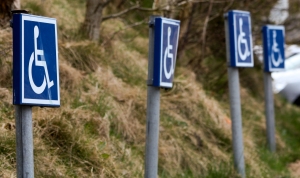
The Dreaded Brown Envelope – ESA News
This year my health has gone downhill somewhat. I suppose it has been doing that for some time, but when I finished my previous job I just knew I couldn’t do it anymore. I was a total mess, and my list of needs and adjustments from a job was getting longer than the job description itself.
In April I applied for Employment and Support Allowance for the first time. For those of you that don’t know much about it, it’s the benefit that replaced Incapacity Benefit – for disabled people who can no longer work.
There are three rates – the Assessment Rate, the Work Related Activity Group (WRAG) and the Support Group. If placed in the WRAG they admit you’re too ill to work currently, but feel you should be able to work with support in the future. People in this group have to attend regular work-related meetings with companies who receive bonuses if they can get you into work; can be forced into unlimited work-placements and can even sanction you. So in one breath they admit people in this group cannot work, and then force them too – and stop their benefits if they refuse. The Support Group means they feel you cannot work, and do not expect you to anytime soon.
The way the system is supposed to work is that you receive the assessment rate for 13 weeks, then either a decision maker at the Department of Work and Pensions (DWP) decides if you should go in a group or be found ‘fit for work.’ If they feel they don’t have enough information they can send you for a medical with ATOS. The assessment rate is lasting much longer than 13 weeks, however, which is probably because a large amount of people are being sent for the medicals despite copious medical evidence with their applications that should give the decision maker enough information to decide.
The medical tests themselves are highly controversial as it’s been shown those carrying them out are under a lot of pressure to find the person fit for work. The tests are extremely limited in scope, and most people are indeed found fit for work and then have to appeal it. In most cases this decision is overturned at tribunal level – showing the system is flawed. The whole process causes a lot of stress to the claimant and this horror vastly increased in October when they decided that if you were found fit for work and appealed, you’d no longer be paid the assessment rate while you waited for the tribunal – which can take up to a year to happen. The benefit starts at £56.80 a week for under 25s, and £71.70 for over 25s. This amount is what people have to live on, and removing it is beyond cruel.
In July I was told I would be having a medical. While expecting this, I was still annoyed as my claim included excellent medical evidence. My GP had written a long letter, as well as my Occupational Therapist. I also had a pile of letters from my consultants including the top specialist in Ehlers-Danlos Syndrome in Britain.
But I heard nothing for six months. When October passed my worry increased dramatically. I wondered what would happen if I was found fit for work and had no income while I appealed. I fretted about how I’d pay the rent for the accessible bungalow I live in, or pay for the treatment the NHS won’t cover.
I’ve also been through all this before with Disability Living Allowance and it wasn’t a very fun time. I pretty much had a mini-break down and had to go through two tribunals. You can read about that starting here and follow the whole saga under the tag ‘benefit claim’.
Having had bad news so often before, and living in constant fear of bad news from the DWP – I have a certain reaction every time I spot their distinctive letter I call the ‘dreaded brown envelope.’
I’m a little superstitious, even though I know it’s silly. I say the rhyme when I see a lone magpie, I throw spilt salt over my shoulder and I make a wish when the numbers on a clock are all the same. I’d been lying awake for some hours trying to sleep (not uncommon) when I spotted it was 2:22am. I made a wish. “Please. Please just let me know either way before Christmas.”
The next morning I was hobbling past the front door when it caught my eye. The dreaded brown envelope. My heart began to thump and my breath caught in my throat. I opened it quickly, and tried to make sense of it. Two words stood out to me – Support Group.
Relief flared through me, but as I read further it stated that I’d been placed in the Support Group from July – 30th November.
When you get put in a group a time of claim goes along with it, and I was aware that people have been placed in a group before and thought they were okay, only to find out that by the time they’d been told which group they were in, their claim had finished. Was that what had happened to me?
I immediately phoned the DWP and spoke to a nice lady who looked my claim up, and agreed that the letters were confusing, but those dates were referring to back pay. They agreed I should have gone into the Support Group from July, and up until November 30th had been on the assessment rate. So I’d get back pay up of the difference between the Assessment Rate and Support Group Rate until that date. Then from the 30th November my claim will run for two years.
I began to cry – and apologised to the poor woman. I explained I was just so relieved. She responded kindly by saying I didn’t have to worry about any medicals, or sending anymore sick notes.
I honestly can’t believe I got put into the Support Group first time and didn’t have to go through a medical. It seems incredibly rare with ESA not to have a medical, and even more so to be put straight into the Support Group.
I can’t even begin to put into words what this means to me. It should mean some financial stability during this time – until the Personal Independence Payments rollout.


